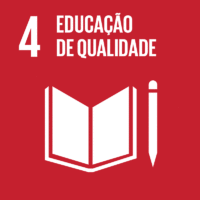Ciência_Iscte
Comunicações
Descrição Detalhada da Comunicação
Preschool children’s social and non-social play behaviors: the role of siblings and temperament
Título Evento
Society for Research in Child Development (SRCD) 2020 Special Topic Meeting: Learning Through Play and Imagination (Conference canceled)
Ano (publicação definitiva)
2020
Língua
Inglês
País
Estados Unidos da América
Mais Informação
Web of Science®
Esta publicação não está indexada na Web of Science®
Scopus
Esta publicação não está indexada na Scopus
Google Scholar
Esta publicação não está indexada no Overton
Abstract/Resumo
Social play involves children’s ability to interact with peers beyond simply playing alongside, including behaviors like cooperation, imaginary play or interactive turn-taking. Non-social play is defined as the consistent presentation (over time and in different contexts) of solitary behaviors and activities in the presence of potential play partners (Coplan et al., 2015). Interaction with peers, and Social play are central for the acquisition and development of skills and abilities basis for the socio-emotional development, children with difficulties in engaging in social play may be at risk for social-emotional difficulties. Therefor being able to identify early difficulties in this domain should be a priority in early education. The aim of this study was to analyze children’s (3-5 years of age) social and non-social play behaviors, particularly, Reticent behaviors described by their pre-school teachers, and to test children’s characteristics and siblings as predictors of play quality.
Participants - 243 children, their mothers and teachers participated in the study. Children were on average 53.60 (DP=11.50), 121 were girls. 150 had siblings and spent an average of 8.12 hours in daycare centers (DP=1.15). Father’s were on average 38.08 years (DP=4.91), with 52% of the fathers having primary to high school education and 48% a University degree. Mothers were on average 36.13 years of age (DP=4.37), with 34.5% having primary to high school education and 65.4% a University degree). All parents were living together, and both worked full time.
Instruments/Procedures - Mothers reported on children’s temperament using the The Children's Behavior Questionnaire (Putnam & Rothbar, 2006, short version; Franklin et al., 2003) and Preschool Teachers reported on the social and non-social behaviors using The Preschool Play Behavior Scale (PPBS, Coplan & Rubin, 1998; Monteiro et al., 2017). All the 62 teachers had a University degree in Early Education.
Results - Preliminary analyses showed that the variance explained by the two predictor blocks (1 - Child’s age, sex, siblings, 2 - children’s temperament) was statistically significant for Reticent Play (F(6,241)=4.45, p<.001, DR2=.03), and Social Play (F(6,241)=6.00, p<.001, DR2=.04). For Reticent Play, Child’s Age (b=-.02, p<.01), the existence of siblings (b=.-27, p<.05), and Extroverted Temperament (b=-.16,p<.05) were significant predictors. For Social Play, Child’s Age (b=.02, p<.001), Extroverted Temperament (b=.18, p<.05), and Effortful Control Temperament (b=.26, p<.05) were significant predictors. The results will be examined in terms of the different contributions of children’s characteristics and the role of siblings in the development of play behaviors.
Agradecimentos/Acknowledgements
--
Palavras-chave
Classificação Fields of Science and Technology
- Psicologia - Ciências Sociais
Registos de financiamentos
| Referência de financiamento | Entidade Financiadora |
|---|---|
| SFRH/BD/138705/2018 | FCT |
Contribuições para os Objetivos do Desenvolvimento Sustentável das Nações Unidas
Com o objetivo de aumentar a investigação direcionada para o cumprimento dos Objetivos do Desenvolvimento Sustentável para 2030 das Nações Unidas, é disponibilizada no Ciência_Iscte a possibilidade de associação, quando aplicável, dos artigos científicos aos Objetivos do Desenvolvimento Sustentável. Estes são os Objetivos do Desenvolvimento Sustentável identificados pelo(s) autor(es) para esta publicação. Para uma informação detalhada dos Objetivos do Desenvolvimento Sustentável, clique aqui.

 English
English


